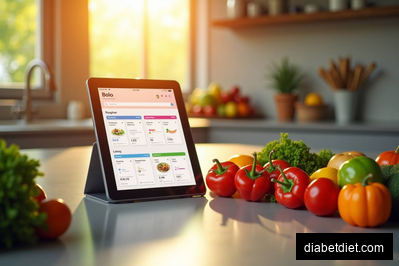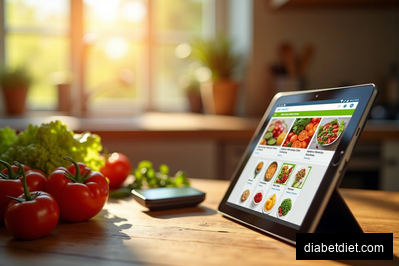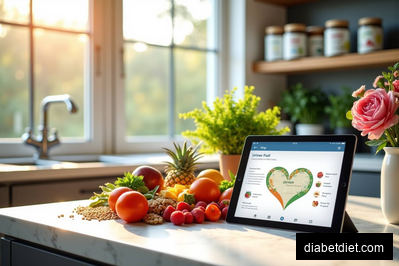Introduction
Diabetes, a chronic disease affecting millions worldwide, has traditionally been managed through manual monitoring and insulin injections. However, the advent of technology is revolutionizing this landscape, facilitating more efficient and personalized care for diabetes patients.
This post will explore how technology is shaping the future of diabetes management, focusing on innovations such as continuous glucose monitoring (CGM) systems, insulin pumps, and artificial pancreas devices.
In this Introduction section, it is crucial to delve deeper into the various facets of diabetes management. Beyond the conventional manual methods, technological advancements have revolutionized how individuals monitor their blood sugar levels. For instance, continuous glucose monitoring systems provide real-time data, offering a more accurate and convenient way to track fluctuations. Additionally, the integration of mobile apps and wearable devices has empowered patients to proactively manage their condition with personalized insights and reminders. This shift towards digital solutions not only enhances the efficiency of diabetes management but also promotes a more proactive and patient-centric approach to healthcare.
Continuous Glucose Monitoring Systems
CGM systems, an innovation that has taken diabetes management by storm, allow for real-time tracking of blood glucose levels. These devices, typically worn on the body, measure glucose in the interstitial fluid (the fluid between cells), providing continuous insights into glucose levels.
This technological advancement is a game changer, as it offers a comprehensive view of a patient's glucose patterns, thus enabling more accurate insulin dosage decisions. For instance, the Free Style Libre system by Abbott is a CGM system that requires no fingerstick calibration, and its sensor can read glucose levels through clothing, making it a convenient and less intrusive solution.
Continuous Glucose Monitoring Systems have revolutionized the way individuals manage their diabetes by providing continuous insights into their glucose levels. These systems not only offer real-time data but also predictive analytics, alerting users to potential highs and lows before they occur. For instance, the latest CGM models feature customizable alarms that can notify users when their glucose levels are trending outside their target range, enabling proactive adjustments to medication or lifestyle choices. With advancements in technology, CGM systems have become more user-friendly, smaller in size, and equipped with longer-lasting sensors, enhancing convenience and accuracy for users.
Insulin Pumps
Insulin pumps, devices that deliver continuous doses of rapid-acting insulin, represent another significant stride in technology’s role in diabetes management. These devices can be programmed to deliver varying insulin doses at different times of the day, mimicking the natural insulin release of a healthy pancreas.
The Mini Med 670G system by Medtronic, for example, is a hybrid closed-loop system, often referred to as the first 'artificial pancreas'. It automatically adjusts insulin delivery based on its CGM readings, reducing the occurrence of high and low blood glucose episodes.
Insulin pumps, devices that deliver continuous doses of rapid-acting insulin, represent another significant advancement in diabetes management. Beyond the convenience of avoiding multiple daily injections, these pumps offer precise insulin delivery tailored to individual needs. Modern models come equipped with sophisticated features like continuous glucose monitoring integration, automated insulin adjustment algorithms, and even smartphone connectivity for seamless tracking and control. Patients can now enjoy greater flexibility in their daily routines, improved blood sugar control, and reduced risk of hypoglycemia. The evolving technology in insulin pump design continues to revolutionize diabetes care, empowering individuals to lead healthier and more active lives.
Artificial Pancreas Devices
Artificial pancreas devices are at the forefront of diabetes management technology. These are systems that automate insulin delivery, closely mimicking a healthy pancreas's functionality. They integrate a CGM system and an insulin pump, with a sophisticated algorithm that calculates the insulin dose required based on the CGM's readings.
The Control-IQ system by Tandem Diabetes Care, for instance, is an advanced hybrid closed-loop system. It not only adjusts insulin delivery to prevent highs and lows but also predicts glucose levels 30 minutes ahead and makes proactive insulin adjustments, offering a new level of glucose control.
Artificial pancreas devices have made significant strides in enhancing the quality of life for individuals with diabetes. With advanced algorithms and continuous glucose monitoring, these devices mimic the functions of a healthy pancreas by automatically adjusting insulin delivery based on real-time blood sugar levels. The latest models even come equipped with smartphone integration, allowing users to monitor their glucose levels and adjust settings on the go. This innovative technology not only provides better blood sugar control but also reduces the burden of constant monitoring and manual insulin dosing, giving patients greater freedom and peace of mind in managing their condition.
Pros and Cons of Technological Innovations
While these innovations have positively transformed diabetes management, they are not without drawbacks. On the positive side, they provide real-time data, minimize manual intervention, and offer superior glucose control. They also grant patients more freedom and flexibility in their daily lives.
However, there are also challenges. Cost is a significant barrier; not all patients can afford these advanced systems. There are also concerns about cybersecurity, as these devices are often connected to the internet. Furthermore, there's a learning curve involved in understanding and effectively using these complex devices.
One notable advantage of technological innovations in healthcare is the improved accuracy and efficiency in diagnosing diseases. For instance, advanced imaging technologies enable early detection of tumors, leading to timely interventions and increased survival rates. However, these innovations also raise concerns about data privacy and security. With the rise of telemedicine and electronic health records, ensuring the protection of sensitive patient information becomes paramount. Striking a balance between harnessing the benefits of technology in healthcare while safeguarding patient confidentiality remains a key challenge faced by the industry.
Conclusion
In conclusion, technology is undeniably reshaping diabetes management, offering patients more control over their condition and improving their quality of life. However, it's essential to consider the challenges and strive to make these innovations accessible and user-friendly for all patients.
As technology continues to evolve, so too will the future of diabetes management. The hope is that these advancements will not only manage diabetes more effectively but also pave the way towards a cure.
As we wrap up our discussion on the transformative impact of technology on diabetes management, it is essential to highlight the promising future ahead. With the rise of continuous glucose monitoring systems and insulin pumps equipped with advanced algorithms, individuals living with diabetes now have access to real-time data and personalized treatment options like never before. Furthermore, the integration of telemedicine and mobile apps into diabetes care has facilitated remote monitoring and enhanced patient-provider communication, ultimately leading to improved outcomes and quality of life for those managing this chronic condition.








